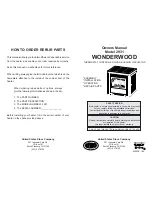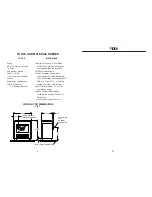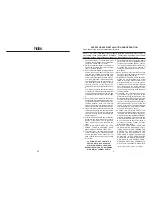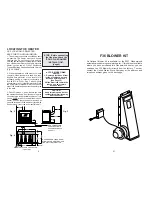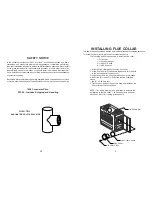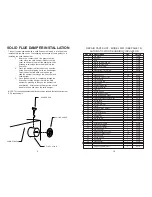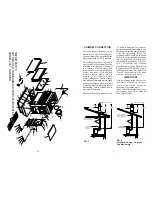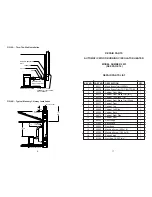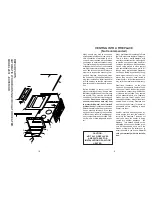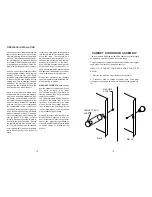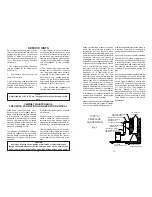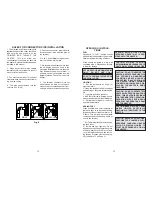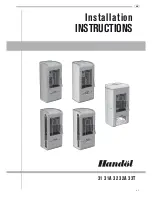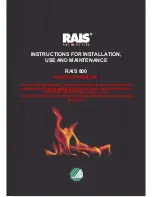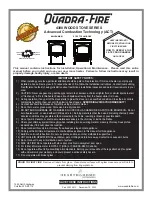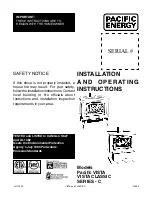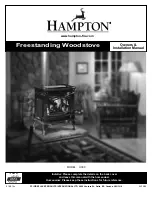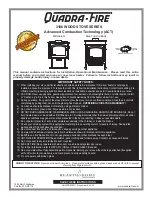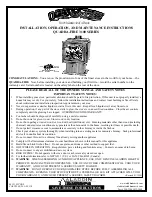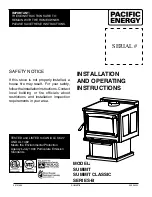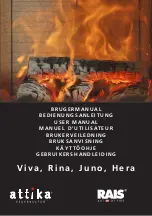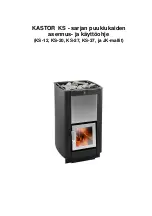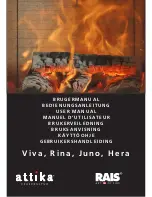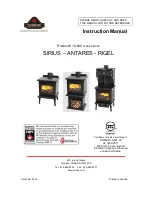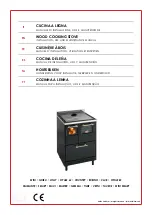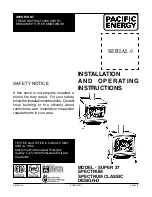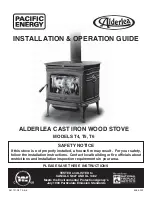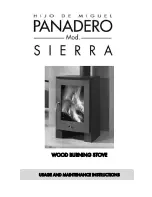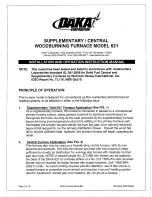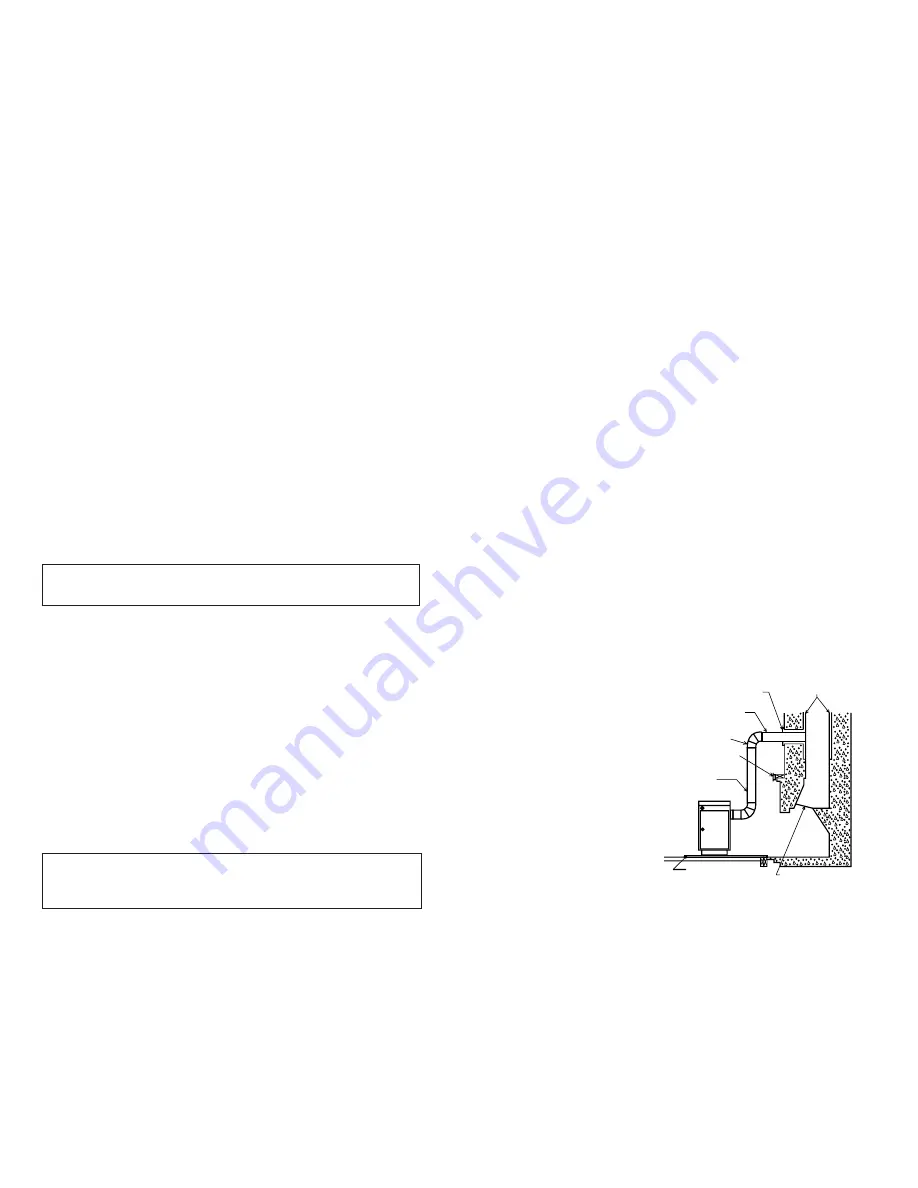
SERVICE HINTS
Do not expect a heater to draw. It is the
chimney that creates the draft. Smoke
spillage into the house or excessive
build-up of water or creosote in the
chimney are warnings that the chimney
is not functioning properly. Possible
causes are:
1. The connection pipe may be pushed
into the chimney too far, stopping the
draft (Fig. 8).
2. Two heaters connected into the
same chimney flue.
3. Same flue being used to ventilate the
cellar or basement. If there is a cleanout
opening at the base of the chimney, it
must be closed tightly and sealed.
4. If the chimney is too cool, water will
condense in the chimney and run back
into the stove. Creosote formation will
be rapid and may block the chimney.
Operate the heater at a high enough fire
to keep the chimney warm preventing
this condensation. (Poorly insulated
chimney)
5. The chimney top may be lower than
another part of the house or a nearby
tree. The wind blowing over a house or
a tree falls on top of the chimney like
water over a dam, beating down the
smoke. The top of the chimney should
be at least 3 feet higher than any point
of the roof within 10 feet (Fig. 6).
6. Other chimney/flue inadequacies
covered else where in this manual.
CAUTION
A chimney fire may cause ignition of wall studs or rafters which you
thought were safe distance from the chimney. If you have a chimney fire,
have your chimney inspected by a qualified person before using again.
When considering a masonry chimney,
round tiles are preferable to square or
rectangular, as round tiles have much
better airflow characteristics and are far
easier to clean. Unfortunately, most North
American chimneys use square or
rectangular tile liners that are really
designed for open fireplaces, not stoves
or furnaces. Of most importance, second
only to overall chimney height, is the
diameter of the flue liner itself. In most
instances, it should be sized to the
appliance; i.e., 6" flue outlet on the
appliance requires a 6" flue. The inner
diameter should never be less than the
flue outlet diameter and should never be
greater than 50% of the appliance flue
outlet. For example, do not expect a
wood burning stove or furnace to function
properly if installed into a chimney with a
flue liner greater than 50% the appliance
outlet -- such as a 6" flue outlet requires
a 6" diameter for optimum drafting, but
can function well with an 8", but becomes
borderline beyond 8" diameter.
Masonry chimneys built of concrete blocks
without flue liners of at least 5/8" fireclay
do not meet modern building codes. A
TYPE "A"
FIREPLACE
CONVERSION
Fig. 7
5/8" FIRECLAY
FLUE LINER
STOVEPIPE CONNECTOR
SEALED AT THIMBLE
HORIZONTAL 6" STOVEPIPE
(24 GAUGE) WITH 1/4"
RISE PER FOOT
6" STOVEPIPE ELBOW
CLEARANCE REDUCER
(FOR MANTEL)
6" STOVEPIPE - HAVING
THREE SHEET METAL SCREWS
PER JOINT OF STOVEPIPE
U.L. LISTED
FLOOR PROTECTOR
DAMPER THROAT
CLOSED AND SEALED
solid fuel appliance must not be joined to
a chimney flue which is connected to
another appliance burning other fuels.
If your chimney has a typically oversized
flue liner of 8x12 inches or greater, or if
it is unlined, it will be necessary for you
to reline the chimney, using many of the
modern approved and economical meth-
ods such as stainless steel, castable
refractory, or properly sized fireclay lin-
ings.
If you have any question regarding venting
your appliance, feel free to contact the
factory at the address and phone number
on this Owner's Manual. You may also
contact NFPA (National Fire Protection
Association) and request NFPA Standard
211 (1984 Edition). Their address is
Battery March Park, Quincy,
Massachusetts 02269. Another helpful
publication is NFPA Standard 908,
available at the same address. Specify
1984 Edition on either of the above
publications.
When wood is burned slowly, it pro-
duces tar and other organic vapors,
which combine with expelled moisture
to form creosote. The creosote vapors
condense in the relatively cool chimney
flue of a slow-burning fire. As a result,
creosote residue accumulates on the
flue lining. When ignited, this creosote
makes an extremely hot fire.
The chimney connector and chimney
should be inspected at least twice
monthly during the heating season to
determine if a creosote build-up has
occurred.
If creosote has accumulated, it should
be removed.
Failure to remove creosote or soot may
cause a house fire. Creosote may be
removed by using a chimney brush or
other commonly available materials. Or,
better yet, by a certified chimney sweep.
Chimney fires burn very hot. If the chim-
ney connector should glow red, immedi-
ately call the fire department, then re-
duce the fire by closing the inlet air
control and closing the damper in the
pipe.
CHIMNEY MAINTENANCE
CREOSOTE-FORMATION AND NEED FOR REMOVAL
NOTE:
A draft reading of .05 to .06 w.c. is suggested for proper burning of this
unit.
14
11

